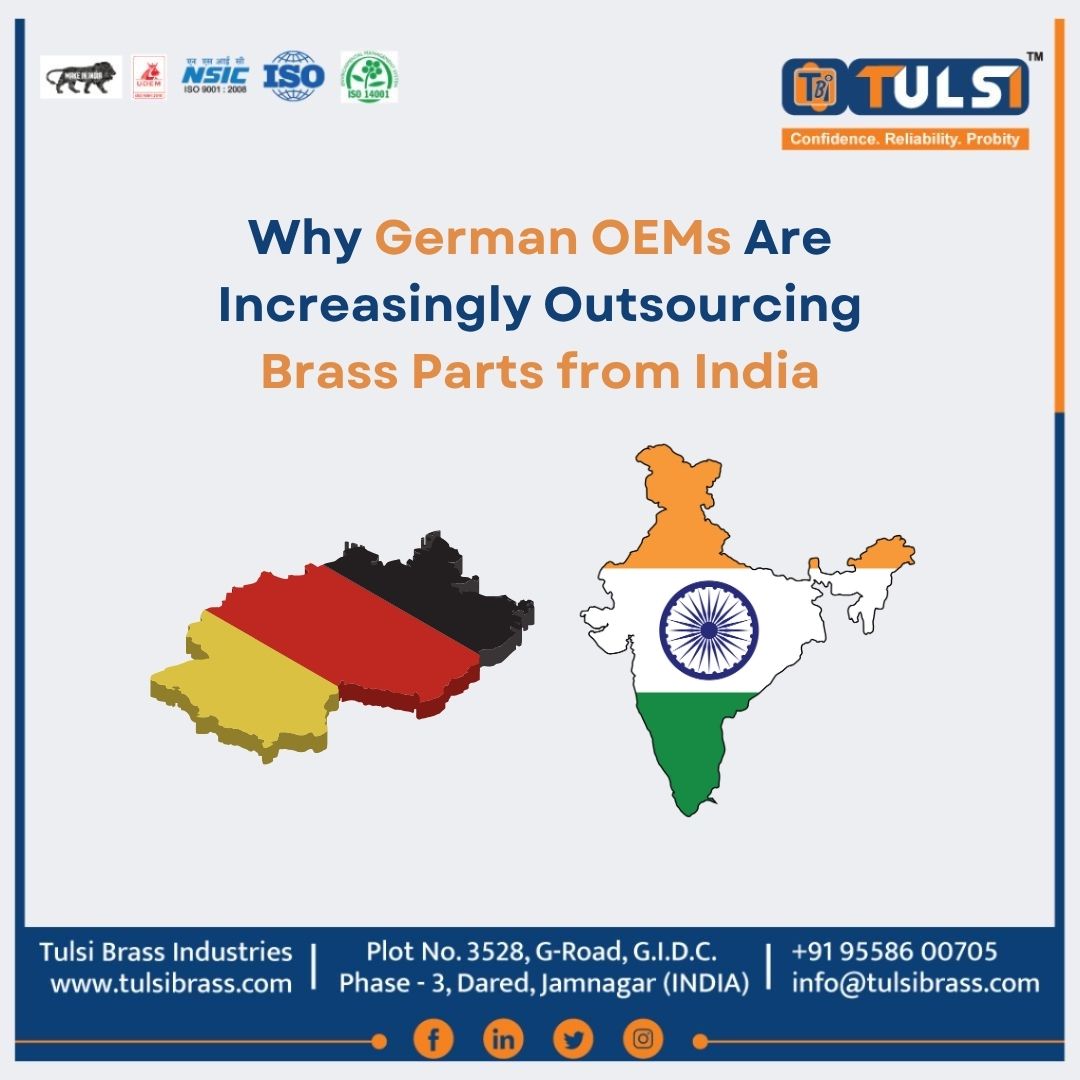Why German OEMs Are Increasingly Outsourcing Brass Parts from India
India Emerges as a Global Hub for Brass Components
India has rapidly evolved into a top destination for precision brass components. German Original Equipment Manufacturers (OEMs) are turning to Indian suppliers for multiple reasons. The shift is driven by cost advantages, skilled workforce, and consistent quality output.Cost-Effective Manufacturing without Compromising Quality
Indian brass part manufacturers offer a perfect balance of price and performance. Labor costs in India are significantly lower than in Europe. This allows Indian exporters to deliver the same or better quality at reduced costs. German OEMs gain a competitive edge in pricing without sacrificing engineering excellence.Advanced Infrastructure and CNC Precision
Modern Indian factories use state-of-the-art CNC machines, automated turning centers, and strict quality controls. These facilities meet ISO, RoHS, and REACH standards. This ensures each batch of brass parts meets the technical demands of German engineering. Precision, repeatability, and zero-defect goals are now achievable at scale.Highly Skilled Workforce with Export Experience
India boasts a large pool of trained engineers and skilled technicians. Most export-focused units in Gujarat and Maharashtra already work with global clients. Their deep understanding of German drawings, tolerances, and documentation makes collaboration seamless. They also follow Kaizen and Lean Manufacturing principles to optimize operations.Reliable Supply Chains and Bulk Capability
Indian brass exporters have developed strong logistic networks. With access to seaports and cargo hubs, delivery timelines remain predictable. Many manufacturers maintain ready stock or operate on Just-In-Time (JIT) systems. This supports German OEMs with steady part supply and zero assembly delays.
Customization at Scale
Another key factor is customization. Indian brass part producers can handle low-volume prototypes to high-volume production runs. Whether it’s DIN, ISO, or custom specifications, they adapt quickly. German OEMs value this agility in new product development and design changes.Compliance with European Standards
Indian exporters prioritize compliance. Many suppliers hold TÜV certifications and undergo annual audits. German companies trust Indian partners due to transparent practices, proper documentation, and eco-friendly manufacturing. This aligns with EU import norms and sustainability targets.Rising Euro to Rupee Exchange Benefits
The growing strength of the Euro compared to the Indian Rupee further boosts this trend. German buyers gain increased purchasing power. It becomes economically sensible to shift component sourcing to India. The favorable exchange rate translates to better profit margins.Government Support for Make in India and Exports
India’s “Make in India” initiative has spurred major investments in industrial clusters. Brass component hubs like Jamnagar, Rajkot, and Faridabad are now well-equipped for exports. Government schemes offer subsidies, tax benefits, and easier compliance procedures. These advantages encourage German companies to form long-term sourcing partnerships.Trusted Long-Term Partnerships in B2B
Indian manufacturers focus on building relationships, not just transactions. OEMs from Germany prefer dependable partners who can scale up and support evolving needs. Indian exporters offer dedicated account managers, 24×7 support, and commitment to long-term growth.Conclusion: India is the Preferred Brass Sourcing Destination
The trend is clear German OEMs are actively moving brass component sourcing to India. The mix of affordability, quality, speed, and reliability is unmatched. With rising demand and global acceptance, India’s brass industry is now a vital part of the European supply chain.German companies gain both financial and technical benefits. Indian exporters gain access to premium clients and expand global footprints. The partnership is a win-win for both economies and the future looks even brighter.

